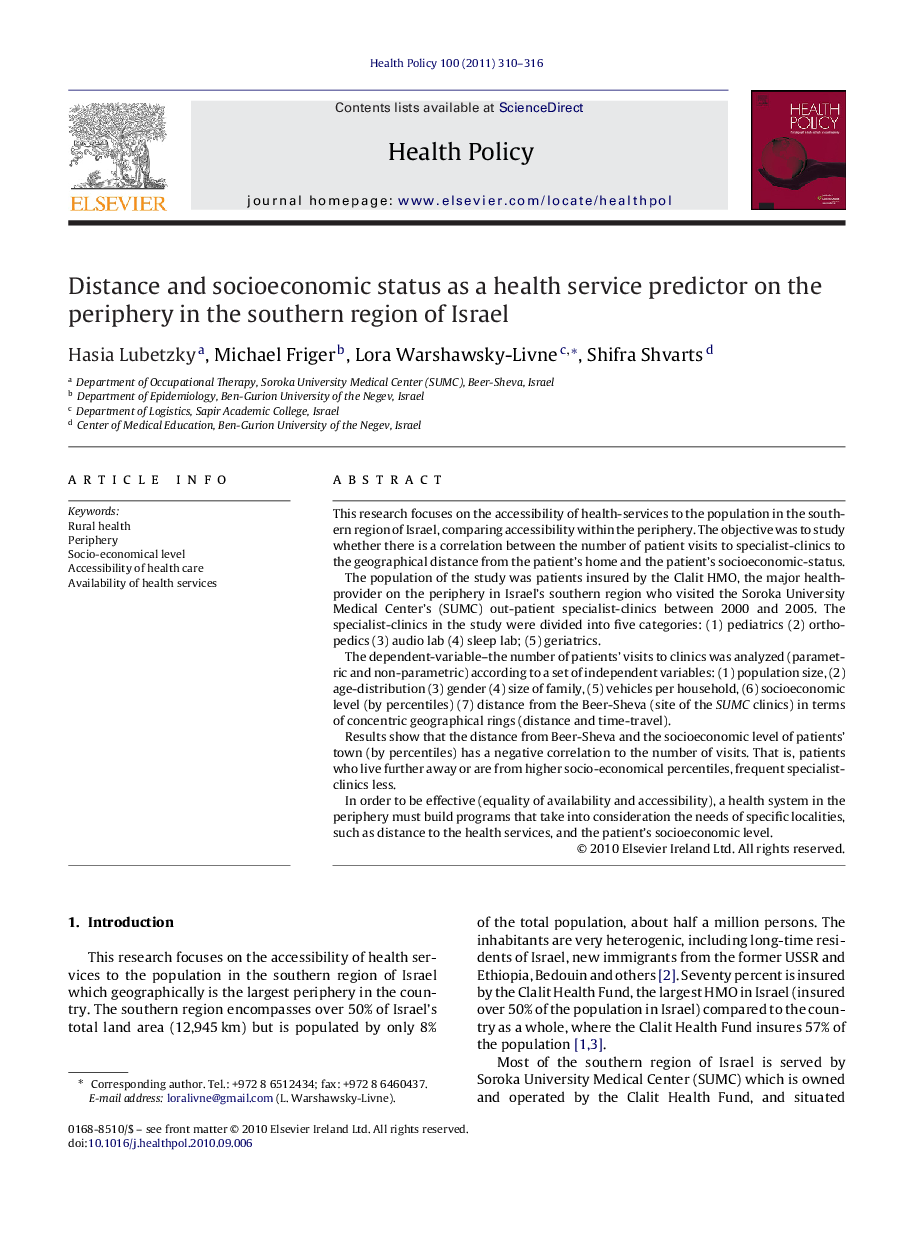| کد مقاله | کد نشریه | سال انتشار | مقاله انگلیسی | نسخه تمام متن |
|---|---|---|---|---|
| 4198173 | 1609029 | 2011 | 7 صفحه PDF | دانلود رایگان |

This research focuses on the accessibility of health-services to the population in the southern region of Israel, comparing accessibility within the periphery. The objective was to study whether there is a correlation between the number of patient visits to specialist-clinics to the geographical distance from the patient's home and the patient's socioeconomic-status.The population of the study was patients insured by the Clalit HMO, the major health-provider on the periphery in Israel's southern region who visited the Soroka University Medical Center's (SUMC) out-patient specialist-clinics between 2000 and 2005. The specialist-clinics in the study were divided into five categories: (1) pediatrics (2) orthopedics (3) audio lab (4) sleep lab; (5) geriatrics.The dependent-variable–the number of patients’ visits to clinics was analyzed (parametric and non-parametric) according to a set of independent variables: (1) population size, (2) age-distribution (3) gender (4) size of family, (5) vehicles per household, (6) socioeconomic level (by percentiles) (7) distance from the Beer-Sheva (site of the SUMC clinics) in terms of concentric geographical rings (distance and time-travel).Results show that the distance from Beer-Sheva and the socioeconomic level of patients’ town (by percentiles) has a negative correlation to the number of visits. That is, patients who live further away or are from higher socio-economical percentiles, frequent specialist-clinics less.In order to be effective (equality of availability and accessibility), a health system in the periphery must build programs that take into consideration the needs of specific localities, such as distance to the health services, and the patient's socioeconomic level.
Journal: Health Policy - Volume 100, Issues 2–3, May 2011, Pages 310–316